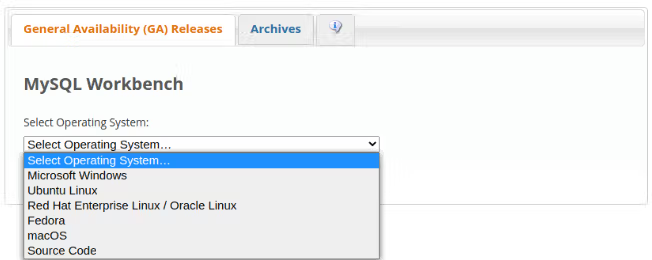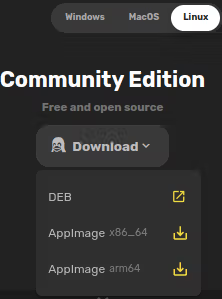Managing databases can be challenging, especially when working with complex queries and large amounts of data. A superior Graphical User Interface (GUI) can make all the difference.
This post will introduce you to the top six free MariaDB and MySQL GUI tools available in 2024. Whether you're a novice or an expert, chances are you'll find the tool suitable for your needs.
Overview of the top 6 MySQL GUI tools for Windows and Linux
MySQL is an open source database platform known for its speed and reliability in high-load production systems. MariaDB is a free, open source fork of MySQL.
While database management can be time-consuming, a GUI tool can simplify administration tasks. It allows for a more efficient design and eliminates the need for manual SQL commands.
Here are the top six free MariaDB and MySQL GUI tools for Windows and Linux for database administrators and developers.
1. MySQL Workbench — pros and cons
MySQL Workbench is a visual tool for MySQL databases. It offers a full range of features for SQL development, server administration, data modeling, change management, and database maintenance.
It comes in two editions: the free community version and a paid standard edition with added enterprise-level functionality.
Pros:
- Offers a user-friendly interface.
- Works with Windows, Linux, and Mac OS X.
- Manages database connections and executes queries.
- Combines data to create effective graphical designs.
- Simplifies table creation and modification.
- Shows the status and health of your servers on simple dashboards.
Cons:
- Software sometimes crashes.
- You can't always stop large queries and must kill them.
2. phpMyAdmin — pros and cons
The phpMyAdmin database utility is a popular tool for managing MySQL databases for the web. It can perform SQL statement execution directly from the user interface. It’s easy to install and use and completely free.
Because it’s written in PHP, you can install it on a web server and view it using a browser.
Pros:
- Has a user-friendly interface.
- Works with Windows, Linux, and Mac OS X.
- Can handle the entire MySQL server and a single database.
- Enables database tasks like creation, modification, deletion, SQL execution, and user management.
- Enables multiple server management, direct SQL statement execution, and CSV/SQL data import/export.
Cons:
- Supports only MySQL and MariaDB.
- Is outdated compared to current industry standards.
3. DBeaver — pros and cons
DBeaver is an open source, cross-platform MySQL GUI tool that anyone who wants to work with data can use. DBeaver lets you manage your data in a spreadsheet-like format, create reports based on data elements from various data storage, and export information in various formats.
It’s available in both open source (free) and enterprise editions.
Pros:
- Has a cross-platform-friendly interface.
- Works with Windows, Linux, and Mac OS X.
- Offers multi-platform databases.
- Creates several data views.
- Lets you connect to any database that supports a Java Database Connectivity (JDBC) driver.
- Simplifies changing tables, columns, and privileges.
Cons:
- It slows down when dealing with massive data sets.
- Some users experience software crashes.
- Large queries are hard to kill.
4. BeeKeeper Studio — pros and cons
BeeKeeper Studio offers a versatile solution for managing various databases, including MySQL, PostgreSQL, and SQLite. With its fast and responsive interface, navigation is easy.
Pros:
- Offers a straightforward user interface.
- Works with Windows, Linux, and Mac OS X.
- Makes it easy to switch between tabs.
- Runs fast, with no lags or glitches.
- Provides auto-completion of SQL queries.
Cons:
- Is a newer tool, so some advanced database management features aren’t available yet.
- Doesn’t support plugins.
5. Adminer — pros and cons
Adminer is an open source web-based database management application that servers as an alternative to phpMyAdmin. You can install it on a web server to manage database content through a browser.
Adminer lets you log in to its MySQL instance, create databases/tables/rows/indexes, and import/export databases.
Pros:
- Has a user-friendly interface.
- Works with Windows, Linux, and Mac OS X.
- Offers enhanced support for MySQL functionalities.
- Is lightweight, fast, and reliable.
- Offers better security than some other options.
- Lets you search any data in a database's tables at the same time.
Cons:
- Has an outdated GUI.
- Lacks multi-host management and synchronization capabilities.
6. HeidiSQL — pros and cons
HeidiSQL is a free, open source tool for modifying data and structures in several types of databases, including MySQL and MariaDB. It lets you create and export databases and connect to multiple local or remote database servers. HeidiSQL also provides SQL language help and command line options.
Pros:
- Offers a user-friendly interface.
- Has a portable version (no need to install and enter admin credentials).
- Grants access to the MySQL database through an SSH tunnel if the standard port is unavailable.
- Has excellent auto-completion and syntax checks.
Cons:
- Some users have reported unexpected failures or problems.
- Wine is required for Linux.
- Mac doesn't support it.
Where to download MySQL GUI tools
The steps to download all the MySQL GUI tools are very similar. They are listed below for your convenience.
1. Downloading MySQL Workbench
If you want to download MySQL GUI tools, MySQL Workbench is a popular choice. You can download it from the MySQL Workbench download page. Select the operating system from the dropdown and click Download:

2. Downloading phpMyAdmin
To download phpMyAdmin, go to the phpMyAdmin download page and click Download:

3. Downloading DBeaver
To download DBeaver, go to the DBeaver download page and click Download:

4. Downloading BeeKeeper Studio
To download Beekeeper Studio,go to the Beekeeper Studio download page, click on the required OS, and then choose Architectures from the dropdown.
Linux

Windows

5. Downloading Adminer
To download Adminer, go to the Adminer homepage and click Download:

6. Downloading HeidiSQL
To download HeidiSQL, go to the HeidiSQL download page and click Download:

Choosing the right GUI tool for your database
The right MariaDB or MySQL GUI tool for your database will depend on your specific needs. Consider the pros and cons of the six free GUI tools listed here before you decide.
To learn more about MySQL, check out the database section of our knowledge base. We can also help you set up your MariaDB databases in the Nexcess Cloud.
Nexcess offers cloud hosting for websites
Our plans are optimized for website performance and development needs.
When a cloud hosting provider manages the backend maintenance and administrative tasks of your cloud server solution, it is managed cloud hosting. Nexcess also bundles email and 24/7/365 support, so you can get application expertise and technical assistance. It’s the best of both worlds.
When you choose managed hosting with Nexcess, we can even help you select the right GUI tool and manage your database so that you can focus on your business.
Recent articles
- Convert MyISAM to InnoDB tables for database performance
- How to optimize Magento performance
- Adding a secondary domain in the Nexcess Client Portal



